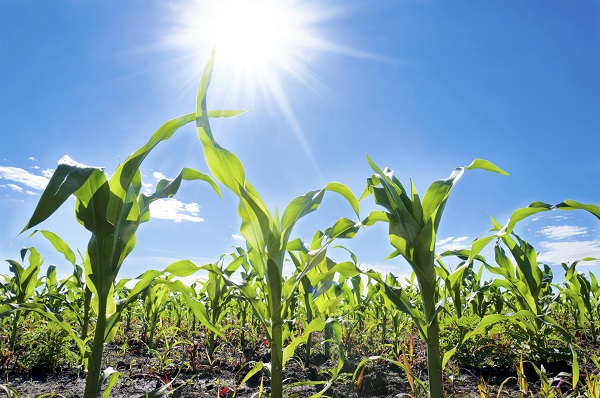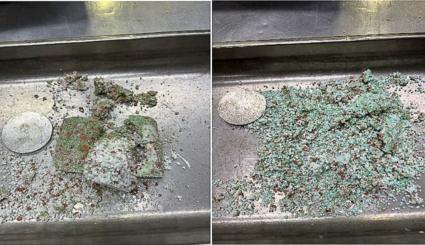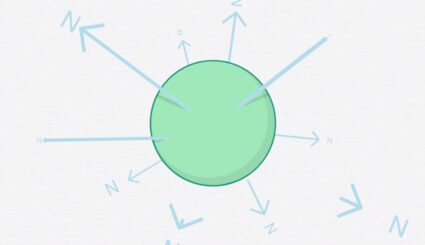Nitrogen Fundamentals – Understanding Nitrogen Loss

Why Nitrogen?
Nitrogen (N) is one of the primary essential plant nutrients. It is required in large amounts for high-yielding, quality crops. It is critical throughout a plant’s lifecycle. Plants require nitrogen most during rapid vegetative growth and early reproductive phases. Nitrogen is essential for:
– The formation of living cells
– Chlorophyll production
– Synthesis of enzymes that drive metabolism
– Formation of nucleic acids needed for metabolism
How N Losses Occur
Nitrogen applied to the soil is susceptible to loss. Loss may occurs as it converts into a gas and escapes into the atmosphere or moves below the plant’s root zone with excess water. Nitrogen may be lost from the soil by leaching, denitrification and volatilization.
Leaching is the movement of plant nutrients in the soil solution to a point below the root zone. Ammonium, which is held in an exchangeable form on soil particles, does not readily leach. Nitrate is not held by soil particles and has a greater potential to leach. Under normal soil conditions, however, ammonium coverts to nitrate quickly. Leaching occurs most frequently in coarse-textured or sandy, well-drained soils. It can also occur during heavy precipitation or irrigation.
Volatilization is the loss of nitrogen to the atmosphere as ammonia gas. The greatest losses occur from surface application of fertilizer containing ammonium (UAN, urea, manure or blended dry fertilizers), particularly on a high pH soil and/or high temperature during hot, windy weather, or on dense crop residue which inhibits fertilizer-soil contact.
Denitrification occurs when oxygen levels are low, anaerobic microorganisms strip oxygen from nitrate which produces nitrogen gas, nitric oxide or nitrous oxide. When this occurs, these gases may diffuse out of the soil into the air. The following four conditions that contribute to denitrification are: Wet or poorly drained soil; compaction; warm soil temperatures; or readily decomposable organic matter.
If water stands on warm soil early in the growing season, nitrogen can be lost to the atmosphere. When using conventional fertilizers such as urea or UAN, growers should delay application of nitrogen as long as possible on soil that is waterlogged.
The Nitrogen Solution
Conventional nitrogen application methods apply much of the fertilizer in advance of crop needs. Nitrogen in the soil is subject to processes by which it can be lost to ground and surface water or to the atmosphere before the plant can absorb it. These losses reduce economic efficiency of the applied fertilizer and may pose an environmental risk.
ESN ® Smart Nitrogen (N) is different from conventional nitrogen. Its controlled-release technology delivers nitrogen to growing crops all season long, not just when it’s applied, allowing crops to reach their full genetic potential.
The unique polymer coating helps prevent against all forms of N loss, including volatilization, denitrification and leaching.
The question shouldn’t be if you can afford to use ESN, but if can you afford the N loss from not using it.
“When budgets are tight and you have to plan ahead of time, then something like ESN is what you want to fit in,” says John Niemeyer. “Its benefits and what it can bring to your farm remain consistent from planting to harvesting with a single application, year after year.” ESN protects your N investment because it offers you a wider window of application, is compatible with no-till operations, flows freely, blends well and works with conventional equipment.
Maximizing ESN Benefits…
For farmers interested in maximum production value, ESN excels in the following conditions:
– Higher precipitation/fields under irrigation
– Lower organic matter/ residual N in soil
– Sandy soil where leaching = significant loss
– Heavier/dense soils where denitrification = loss
For farmers interested in maximum convenience, ESN can save time in the following ways:
– Application of all N with seed increases efficiencies
– Quicker coverage of your acres vs. liquid nitrogen
– Single application of N reduces the risk of delayed top or side dressed applications
With over 800 crop years of testing across a variety of geographies and soil types, we can say with confidence that any crop that uses nitrogen can potentially benefit from using ESN.
Smart growing starts with smart nitrogen application. To learn more about nitrogen fundamentals and ESN, watch this online module.


